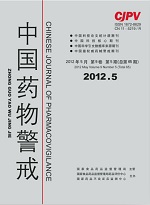|
|
The Effeet of Extracting Methods on "Quality-Toxicity" Comprehensive Evaluation Model of Rhizoma Menispermi
LUO Dong, ZHENG Li-na, SUN Rong
2012, 9(5):
266-268.
Objective Explore the effeet of extracting methods on "quality toxicity" comprehensive evaluation model by comparing the content of alkaloid and acute toxicity from Rhizoma Menispermi extracted by different methods. MethodsWith 0.5% sulfuric acid as solvent, thermal circumfluence method, ultrasonic method, percolation method, warm immersion method were used to extract total alkaloids from Rhizoma Menispermi, the acid-base titration to determinate the content of the total alkaloid, high performance liquid chromatography to determinate the content of Menispermine, the classical method of acute toxicity to compare acute toxicity. ResultsIn the determination of Menispermine in different components of Rhizoma Menispermi,it was found that the size order of the content of total alkaloids was: ultrasonic method>percolation method, and the content of the total alkaloid extracted by thermal circumfluence method and warm immersion method could not be measured. the size order of the content of Menispermine was: thermal circumfluence method>warm immersion method, but the content of Menispermine extracted by the ultrasonic method and percolation method could not be measured. Different extraction methods on the size of the acute toxicity in mice the maximum administered dose(MLD): percolation method>ultrasonic method>thermal circumfluence method>warm immersion method. The acute toxicity of warm immersion method was maximum. ConclusionUnder different extracting methods, the content of main chemical composition and toxicity was different, and there was a certain relationship between its toxicity and the content of total alkaloids and Menispermine, but not completely consistent. There was certain effect of extracting methods on "quality toxicity" comprehensive evaluation model. It was more comprehensive, Objective and reasonable to determine extraction methods of toxic Chinese medicine through the comprehensive evaluation model.
References |
Related Articles |
Metrics
|
